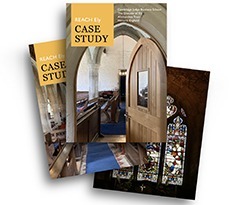The initial stage of the REACH Ely implementation involves scoping and developing fifty case studies on church buildings and community characteristics with informants from a subset of deaneries and parishes in the Diocese of Ely.

The team is selecting case study materials from a range of self-selected approaches from local churches, and also via publicity and presentations at deanery engagement meetings, which has helped generate the list of 39 case study locations. The remaining cases will be selected using available statistical data from the diocese of Ely and the Church of England databases. At this initial stage, in-depth interviews have been conducted at churches within the Cambridge North and South, and Granta deaneries. Other case locations include churches from the deaneries of Ely, Yaxley, St Ives, St Neots, Shingay, North Stowe, March, Huntingdon, Fincham and Feltwell, and Wisbech Lynn Marshland.

Within the diocese, the percentage of population that has little or no relationship with the church reaches about 97 per cent, which raises concerns about the future of churches and their assets. Yet it is the ambition of the Taylor Report, and also the REACH Ely project, that the future sustainability of church buildings should be in the hands of that very 97 per cent who are not currently engaged with the church.
Church visits and observations helped develop interview questions around the topics: the church and its buildings; fundraising; community events; communication and engagement; challenges and lessons learned. By developing case studies, the project asks whether churches have been able to engage with the 98 per cent effectively. Some churches and communities are brilliant at this already – their experiences and challenges are important to learn from for the benefit of the others. Some churches and communities are also finding effective community engagement a real struggle – the project is examining those too.

